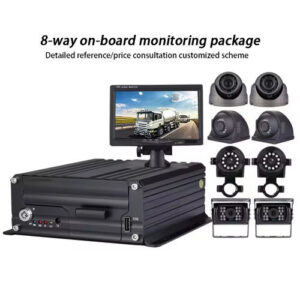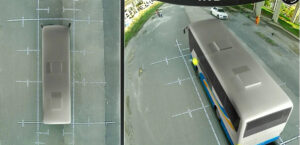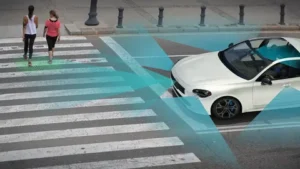Introduction to Intelligent Video Surveillance
Intelligent video surveillance (IVS) represents a significant advancement in monitoring and security technologies, particularly within the context of public transportation systems like buses. This technology combines traditional video surveillance methods with sophisticated analytical algorithms that enable real-time data processing and recognition. At its core, IVS enhances safety and security through its ability to identify unusual behavior, track individuals, and recognize specific events within real time.
One of the primary features of intelligent video surveillance systems is their ability to utilize artificial intelligence (AI) and machine learning (ML) to interpret video feed data. For instance, these systems can distinguish between different activities, such as incidents of violence, vandalism, or fare evasion, and can alert authorities immediately, allowing for prompt intervention. Additionally, the use of automated number plate recognition (ANPR) technology helps in tracking vehicles and enhancing law enforcement efforts.
The benefits of implementing IVS in public transport are multi-faceted. First and foremost, these systems significantly improve passenger safety by deterring criminal activities. The presence of surveillance cameras equipped with intelligent features can discourage potential offenders from engaging in illegal behaviors. Moreover, IVS enhances operational efficiency by allowing transport authorities to monitor various aspects of service delivery, including adherence to schedules and passenger load management. This comprehensive view enables more informed decision-making regarding resource allocation and service improvements.
The integration of intelligent video surveillance systems within the bus industry is, therefore, essential. It not only enhances the security of passengers and assets but also contributes to a more efficient public transport infrastructure. As cities continue to evolve, embracing advanced surveillance solutions in public transport systems is crucial for meeting the increasing demands of safety, security, and overall operational efficiency.
Key Components of Intelligent Video Surveillance Systems
Intelligent video surveillance systems designed specifically for buses are comprised of several essential components that work together to enhance safety and operational efficiency. At the core of these systems are advanced hardware elements, including high-definition cameras and various sensors. These cameras are strategically installed both inside and outside the bus to capture real-time video feeds, allowing for comprehensive monitoring of passenger activity, driver behavior, and surrounding traffic conditions. Additionally, sensors can detect irregularities such as sudden stops or unauthorized entry, further bolstering the system’s capacity to respond to incidents.
Complementing the hardware are sophisticated software solutions that facilitate real-time monitoring and data analytics. The software enables operators to receive live feeds from multiple cameras simultaneously, while also analyzing the footage for specific patterns and anomalies. Algorithms integrated within the software can recognize unusual behavior such as loitering or aggressive interactions between passengers, thus triggering alerts for immediate action. This feature significantly enhances the response time of security personnel and can even lead to preventative measures being implemented in advance of potential incidents.
Storage solutions are another critical aspect of intelligent video surveillance systems for buses. These systems require reliable storage capacities to retain video data for future examination, which can be crucial in thorough investigations following incidents. Cloud storage options are often employed, offering scalable solutions that allow for vast amounts of data to be securely stored and easily accessed. Furthermore, the integration of artificial intelligence (AI) and machine learning technologies enhances the system’s capability by allowing for advanced features such as object detection, behavior analysis, and predictive maintenance. Consequently, this integration not only improves safety but also contributes to operational efficiency by analyzing data to optimize bus routes and schedules.
Benefits of Implementing Intelligent Video Surveillance in Buses
The implementation of intelligent video surveillance solutions in buses offers a multitude of advantages that significantly enhance both safety and operational efficiency. One of the primary benefits is the improved safety and security for passengers and drivers. By equipping buses with advanced surveillance cameras, transport operators can monitor real-time activities inside and outside the vehicle. This capability acts as a deterrent against potential threats such as harassment, violence, or other criminal activities. Furthermore, drivers can respond swiftly to emerging situations, ensuring a safer journey for all onboard.
Another notable benefit of intelligent video surveillance is the reduction of vandalism and theft. With high-definition cameras strategically placed in and around buses, any acts of vandalism can be recorded and addressed promptly. This not only discourages malicious behavior by creating an observable deterrent but also aids in the recovery of stolen items through the identification of culprits. The presence of surveillance technology thus contributes to a more secure environment for public transportation.
Moreover, real-time monitoring capabilities lead to better incident response. In the event of an emergency, whether it involves medical situations or security threats, the available footage allows dispatchers and authorities to assess the situation accurately and react appropriately without delay. For instance, in certain case studies where intelligent surveillance systems were integrated, response times improved significantly, resulting in better outcomes for passengers involved in incidents.
Finally, enhanced operational efficiency is achieved through comprehensive data analysis generated by these surveillance systems. The recorded footage and data can be analyzed to identify patterns in passenger behavior, peak travel times, and operational bottlenecks. This information enables transport operators to optimize schedules, improve service delivery, and allocate resources more effectively, leading to a smoother travel experience overall. The benefits stemming from the implementation of intelligent video surveillance in buses are substantial and multifaceted, making it a critical component of modern public transportation systems.
Future Trends in Bus Surveillance Technology
As we look toward the future of intelligent video surveillance solutions for buses, several significant trends and innovations are set to emerge, largely driven by advancements in underlying technologies such as the Internet of Things (IoT), 5G connectivity, and cloud computing. These technologies promise to enhance the effectiveness and efficiency of surveillance systems in a multitude of ways.
The integration of IoT devices into bus surveillance allows for real-time monitoring and data collection from various sensors. This interconnectedness enables surveillance systems to respond dynamically to incidents, enhancing the safety and security of passengers. Through the use of video analytics powered by artificial intelligence, these systems can identify unusual behavior patterns or emergency situations, thus facilitating quicker responses from authorities, which is essential in public transport environments.
Moreover, the rollout of 5G technology is expected to significantly enhance video streaming capabilities. With faster data rates and low latency, high-definition video feeds can be transferred in real time to control centers. This advancement means that transit authorities can monitor multiple bus routes simultaneously, allowing for a comprehensive overview of service operations, and enabling immediate action if needed. Furthermore, the increased bandwidth that 5G provides can support more sophisticated surveillance tools, including facial recognition technologies and thermal imaging.
Cloud computing also plays a pivotal role in the future of bus surveillance. By storing data in the cloud, transit systems can reduce the need for on-site hardware while allowing for scalable and flexible data management solutions. This transition enables transit authorities to analyze historical data, enhancing predictive maintenance and improving overall service delivery. However, the integration of cloud-sourced data raises ethical considerations, particularly related to privacy and data security. Ensuring the protection of sensitive information while utilizing advanced surveillance technologies will be a key challenge as these systems become more widespread.






